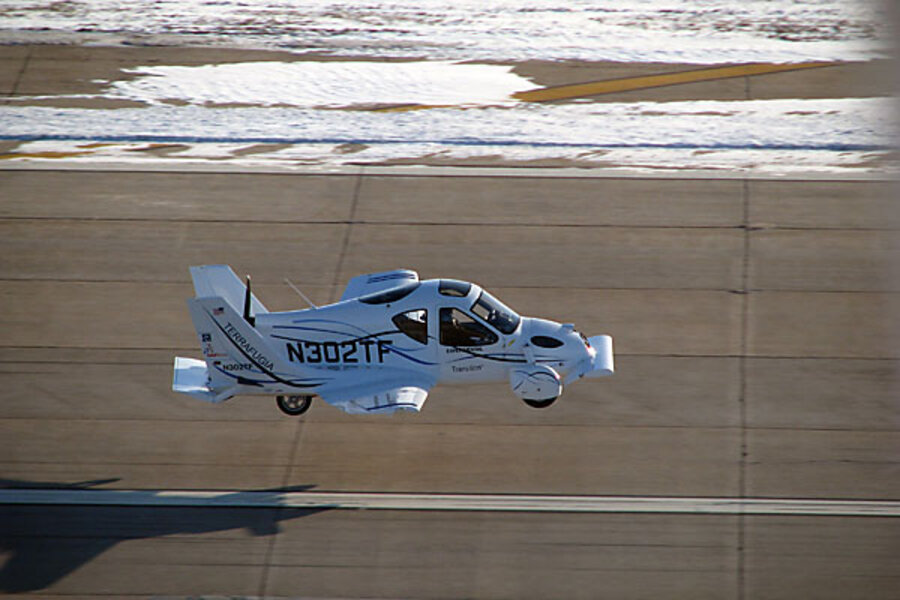Flying car: It flies! It drives! But will it sell?
Loading...
Go ahead, admit it. You've had those moments when, stuck in traffic, you've dreamed about a flying car.
No traffic jams to slow you down. No highways. Just you, a little airspace, and the flying-car freedom to get there as the crow flies.
Such dreams got a little closer to reality this month when the Federal Aviation Administration (FAA) approved the Transition Roadable Aircraft as a "light sport aircraft." Terrafugia, the Woburn, Mass., company that makes the roadable aircraft, says it plans to deliver its first production model to customers in the fourth quarter of next year.
So how big might the market be for flying cars?
They won't be selling like Ford Fusions anytime soon. Or Maseratis, for that matter. (Fiat makes a few thousand of the iconic Italian sports cars every year. You can pick up a new 2010 Granturismo S for about $130,000.)
Terrafugia expects to make about 300 to 400 roadable aircraft a year, which will cost nearly $200,000.
Even those goals could be hard to meet. Only about 3,000 to 4,000 small and custom-built planes are sold in the United States each year, so Terrafugia would have to capture 10 percent of the market with a brand new product.
"That's ambitious," says Dick Knapinski, spokesman for the Experimental Aircraft Association, a 55-year-old aviation group in Oshkosh, Wis. But "it's certainly a product that reaches beyond the traditional aviation community."
More than 70 Transitions have been reserved so far, representing an order backlog of $14 million, according to the company. Assuming you have $200,000 to drop on a vehicle, is a Transition for you?
You'll need a sport pilot license, which is easier to get than a full pilot's license. But there's no flying at night. And since its a light sport plane, you can't fly in commercial air space, so you'd have to avoid major airports.
On the plus side, you can drive to and from the airport, saving rental car fees when you're traveling, and hangar fees when you're at home. The vehicle travels at about 115 miles per hour in the air and 65 m.p.h. on the ground and covers about 400 miles on a tank of regular gas.
If the weather gets dicey, pilots can land and keep driving.
The point, though, is that Terrafugia's roadable aircraft is really for people who love to fly rather than those who merely aim to shorten their commute.
"Terrafugia’s philosophy is to design a vehicle for pilots that brings additional ground capability to an airplane instead of attempting to make a car fly," the company says on its website.





